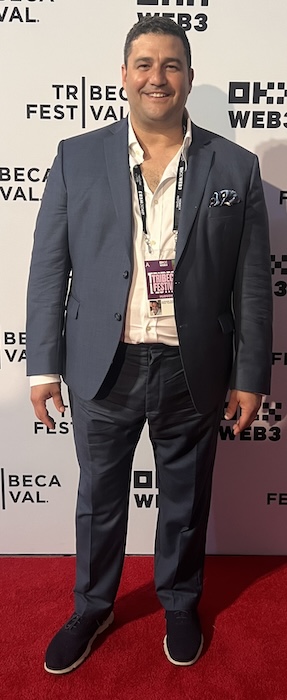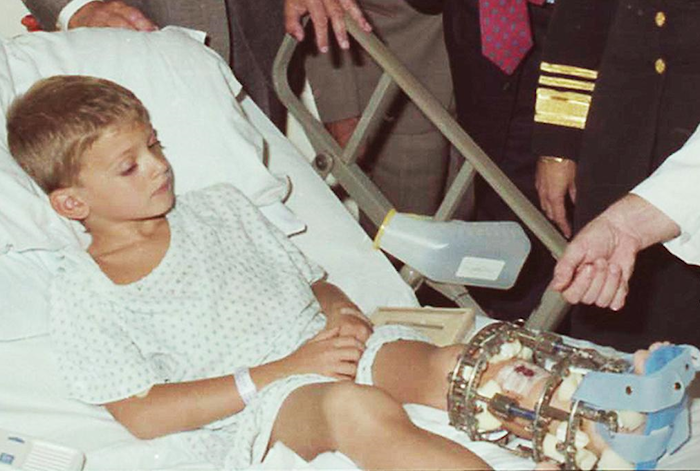Cold Spring filmmaker shares hospital history
The hour-long documentary, On the Shoulders of Giants: The History of NYU Langone Orthopedics, is not for the squeamish.
During extended operating room scenes, doctors slice through body parts and there’s blood everywhere. That’s nothing compared to the sounds of orthopedic surgery: hammering, grinding, sawing. The camera also lingers on graphic photos, X-rays and descriptions of gruesome injuries.
On the flip side, many people will enjoy watching procedures that can improve people’s lives.

The movie, produced and directed by Cold Spring resident Peter Sanders, will be available for streaming on Tuesday (Aug. 27). Commissioned by the hospital, it earned a nomination this year for best feature film at the Tribeca X festival, which considers marketing and promotional material, but lost to a film created for Ronald McDonald House Charities.
With special access, Sanders explored the world of orthopedic surgeons at the historic and influential Hospital for Joint Diseases in Manhattan, renamed in 2006 after a $1 billion gift from Home Depot mogul Ken Langone and other donors.
“Orthopedists are a cross between carpenters and artists, making split-second decisions and carving like sculptors,” Sanders says. “They’re super doctors who can help you walk again and move things around with your hand, stuff we take for granted.”
Sanders knows this firsthand. Ten years ago, he broke his leg. During treatment, he gave Dr. Kenneth Egol a DVD of his 2014 documentary, Altina, a portrait of Sanders’ grandmother, artist Altina Schinasi. Among other accomplishments, she created the “Harlequin” cats-eye eyeglass frames and made a documentary nominated for an Academy Award in 1960.

In 2020, the filmmaker shattered his foot in 10 places and visited Dr. Egol again. “He said, ‘You should do a documentary on this hospital,’ and that became my first commission,” says Sanders. “This was solely intended to stream on the hospital website, but I wanted to bring it to a larger audience.”
Sanders is also credited as director of archival research, which involved digging through museums, libraries and other repositories for photos and other historical material.
On-screen, he highlights this gem from an old book: “Treatment is extended to all persons regardless of race, creed or color, suffering with acute or chronic joint diseases, or any deformity, congenital or acquired. Free beds to the poor. No charge for splints or apparatus to the indigent.”
Founded in 1905, the teaching hospital helped pioneer now-standard procedures such as MRIs, plates and screws for broken bones and hip and other joint replacements. The first female orthopedic surgeon in the country to publish an article in a peer-reviewed journal worked there and teaching doctors at the hospital helped pioneer minimally invasive procedures now grouped under the term sports medicine, including arthroscopic surgery.

Like ballplayers, politicians and philosophy professors, orthopedists revere their forebears. One scene in the film unfolds in the hospital’s modest historic display, which shares space with a small library of leather-bound books.
Another telling moment takes place in the doctor’s lounge as they prepare for surgery. “If I have a hard case, there are plenty of shoulders to cry on, although there is no crying in orthopedics — only inside,” quips one doctor.
“It’s good for us to sit here and BS a little bit and discuss cases and discuss life,” he says, letting his voice drift and staring off into space as he gets ready to cut someone open. After walking through the tunnel in uniform to take the field, the team restores movement to a man’s arm.
Sanders and his X-rays make cameos — “my Hitchcock moment,” he says. Success with the film led to more commissions crafting shorter works about the institution’s people and programs.
Orthopedists do amazing things, but if someone is at the hospital for an appointment, something’s wrong. “No one ever expects to meet me,” says Egol in the film. For Sanders, beyond regaining the ability to walk, the encounter worked out: “I had to get a break to get a break.”
On the Shoulders of Giants will stream on Apple TV, Hoopla, iTunes, Amazon Prime and other providers, and it’s also online at tribecafilm.com. Sanders was assisted by cinematographer Bryan Sarkinen, composer Malena Kuss, editor Andrew Coffman and sound designer Pat Donohue.


I really enjoyed this documentary. It wasn’t as gory as you might expect, especially if you consider it part of the process the remarkable surgeons and orthopedists must employ to affect a good outcome. It was refreshing to see their camaraderie.